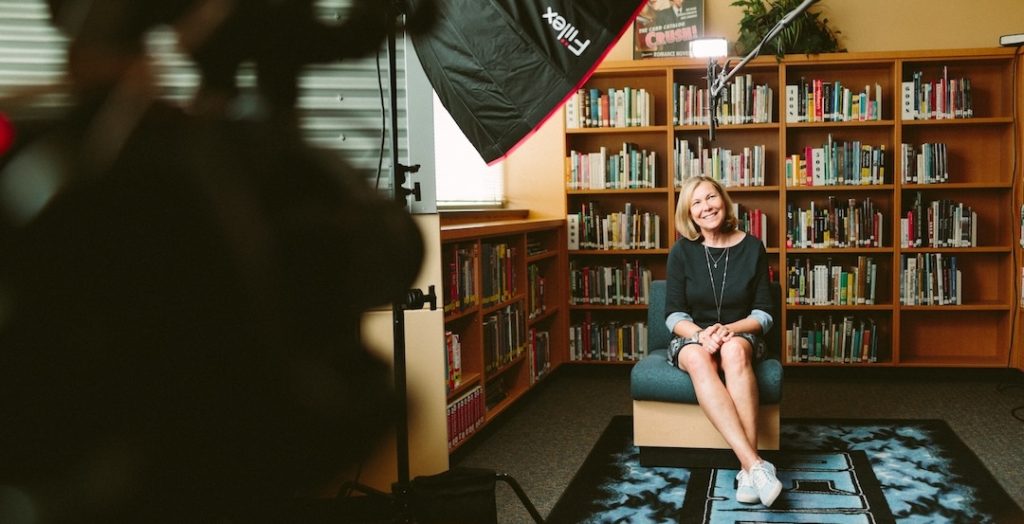Interviews
Some of the most common production needs at USask are for interviews. Capturing the expertise of an industry professional, a colleague from another institution, a student testimonial or the wisdom of a mentor capturing quality interviews is an art all unto its own. Let’s take a look at the art of the interview and discuss a few best practices.

Setup
Using the techniques already discussed in this guide for lighting and composition you should be well prepared to set the stage for a great looking interview. Once your lighting and framing are decided you’ll want to position yourself or the interviewer to one side of the camera or the other so that your interviewee has someone to make eye contact with just off camera. If you have framed your subject using the Rule of Thirds, discussed in the Camera Composition section of this guide, then your subject will already have a complementary amount of speaking room as they maintain eye contact with you off camera.
Conducting an Interview
There are a number of helpful tips for conducting an interview that will help make your interviewee more comfortable and ensure your get the footage you need. Remember, you likely won’t want to use the interview in it’s entirety, but will be looking for sound bites or short concise clips that can be edited together with B-roll and other footage in your final production.
-
Remind your interview subject where their eye line will be (to you or to camera).
-
Ask them to re-frame the question in their response so that you don’t have to use your question in the final product.
-
Providing your interviewee with the questions ahead of time can allow them to feel more comfortable with the interview process, but be conscious of “scripted responses” and try to get them to elaborate if you feel the answers are too prepared.
-
Don’t be afraid to follow up with questions and keep it conversational.
-
Do not talk or make sounds of acknowledgement while interview subject is talking.
-
Leave time after they finish speaking before you respond or pose another question (allows you clip time for your edit) and sometimes a surprise…
-
At the end of the interview, always ask it there is anything that they would like to add that you may not of thought to ask.
-
Get appropriate releases – interview subject, location, artwork etc.
Here is a great overview video of how to conduct an interview from our colleagues at UBC Studios.

